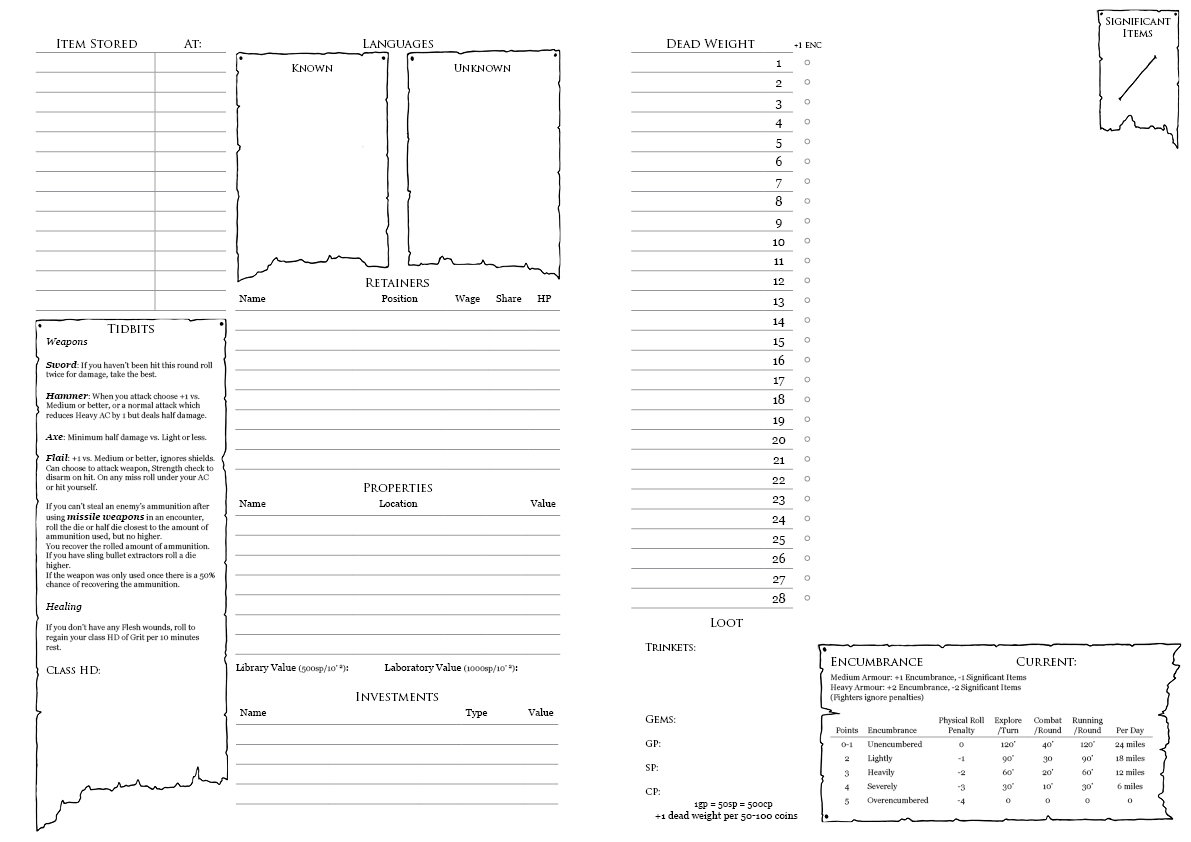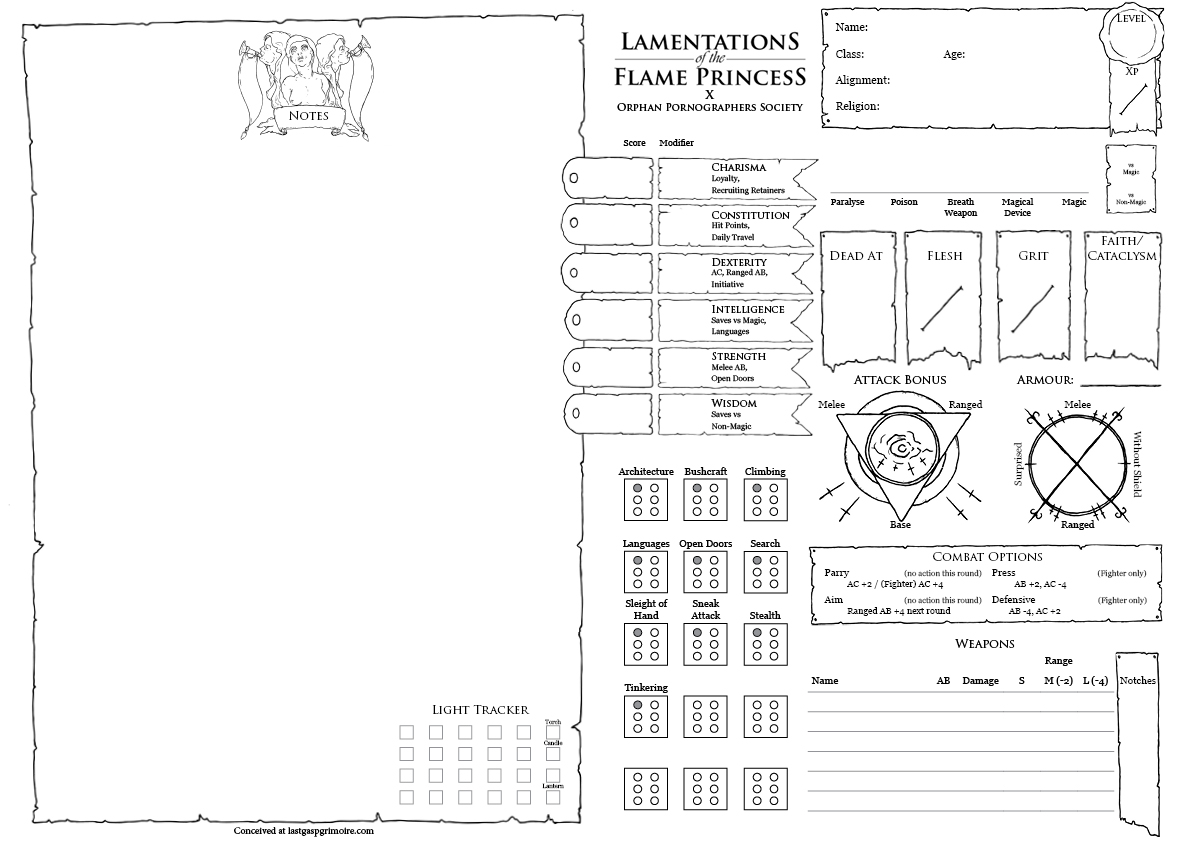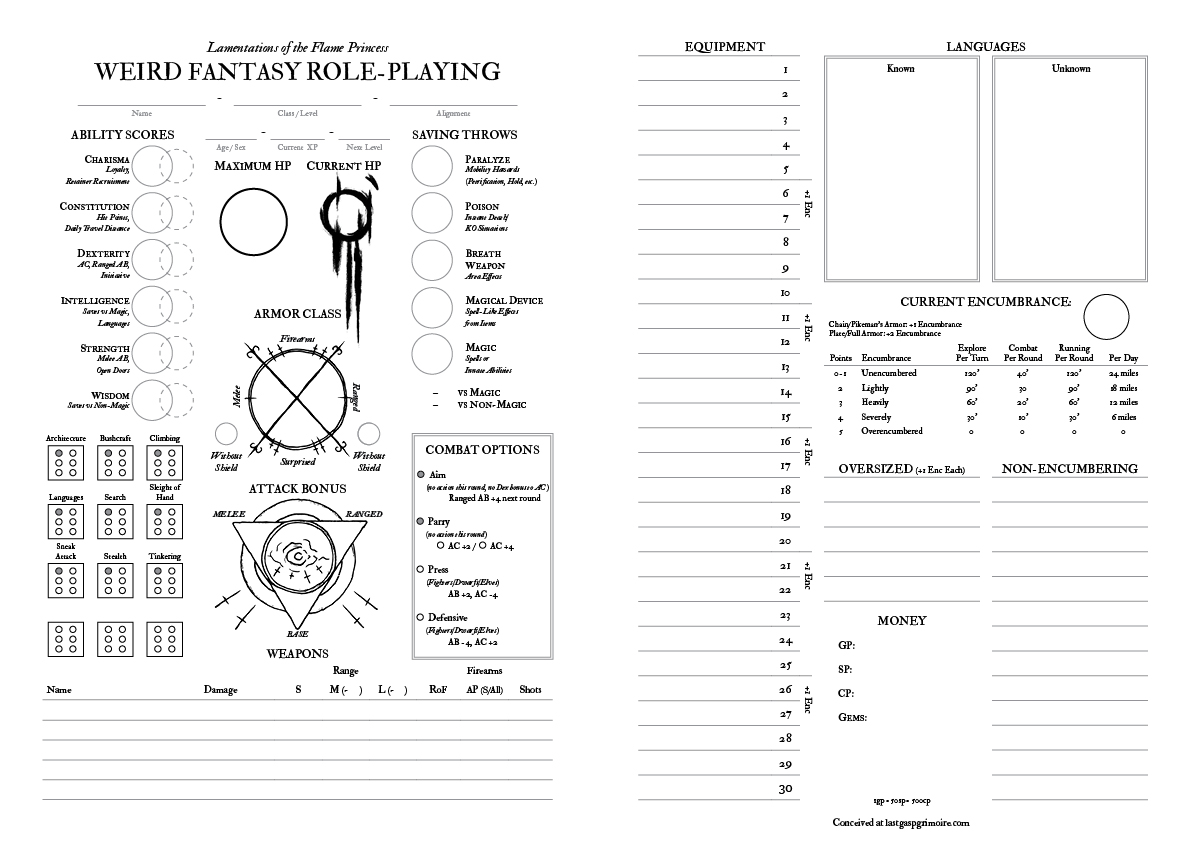I've always been fascinated by the mechanics behind role-playing games. I have a terrible habit of picking up games I know I'll almost certainly never play with the explicit purpose of seeing how they decided to build their particular machine.
Recently, I've begun really digging into Sword & Sorcery RPGs as a thing. I've always had a love for the genre, but it took a while for me to piece together why I was so drawn towards games explicitly billed as Sword & Sorcery over, say, generic fantasy games. After all, OSR games tend to cleave very close to their S&S roots without even trying. The explicit assumption is that the PCs are all adventurers in search of treasure, willing to put themselves in ridiculous danger to acquire it. Is it familiarity that has lead me to stray?
There's a broader theme, I realized. Reading through a game's mechanics isn't just about how they decided to numbers and dice to make up probabilities, or seeing if they came up with some creative and interesting innovation to make play faster/easier/more interesting. I've argued before that I believe a game's mechanics are part of the setting and define its reality. It's about the feel of the setting. After all, if the average person in your game can take 30 points of damage without suffering penalties or adverse effects, and a pistol does d6 damage, the reality of the world is that it takes an awful lot of bullets to do someone serious injury. Don't be surprised when PCs act accordingly.
A gritty crime drama or horror story should have rules as such that characters can and will die if they aren't careful. On the other hand, if you're going for a super-heroic story about crimefighters then it's totally genre appropriate for bullets to do negligable damage. Jason Statham has made a career out of seeing how much physical abuse a single action hero can take on screen.
 |
| Source |
More than that though, when I look through mechanics I want to see what kind of experience they are designed to give and how they accomplish that.
There's no hiding that I was a huge The Riddle of Steel guy back in the day. It was a kind of Ah-ha! moment that really changed the way I played tabletop RPGs. Our own Band of Bastards owes a fair bit of inspiration to it. For me, it was the definitive "game about swordsmen." It delivered that experience and then some.
I've always held Sword & Sorcery to be one of the most evocative traditions in fiction. In digging through various Sword & Sorcery style games, I realize what I am looking for in a game is something that gives me not just the feel of an S&S story, but also the experience of one through play. It's a dragon I keep chasing, but I'm unsure if it will ever be satisfied.
One of the things I find so interesting about game design is getting to ask these questions and try to find different answers and solutions. I don't want to just create a game that has a functional mechanic. That's fairly easy: Roll <insert die or dice here> add / subtract modifier based on <skill, attribute, trait, whatever> meet over/under <number based on difficulty>. I want to read, play, and create games that do different things, that are tailored to provide specific experiences and evoke a certain feeling.
That's the magic of RPG mechanics. You aren't just looking for a way to resolve task probabilities, it's an exercise in creative problem solving. It's the purest form of thought experiment. You're building a virtual reality machine. You're dissecting what is at the heart of a particular genre, and then trying to come up with innovative and creative ways to both replicate the internal logic and feel of that world and provide an experience that brings playing that world to life.
This test is actually the reason I have a hard time getting into generic systems: d20, GURPS, Savage Worlds. Don't get me wrong, I played a great deal of Savage Worlds a while back. It's great for quick games, pick-up games, pulp games. If anything, I'd argue that it's actually tailored specifically to be a pulp game, but anything outside of that specific genre I'd generally use something else.
If you're at all interested in game design, I really urge you: read and play as many different games as possible. Take note of what they do and how they do it, and ask yourself how those decisions impacted your play. Any time you play a game that pitches itself to a specific genre, keep an eye out for what the game does and ask yourself how the mechanics help evoke the feel and experience of that genre. It's a great habit on the way to sharpening your own design skills.





































